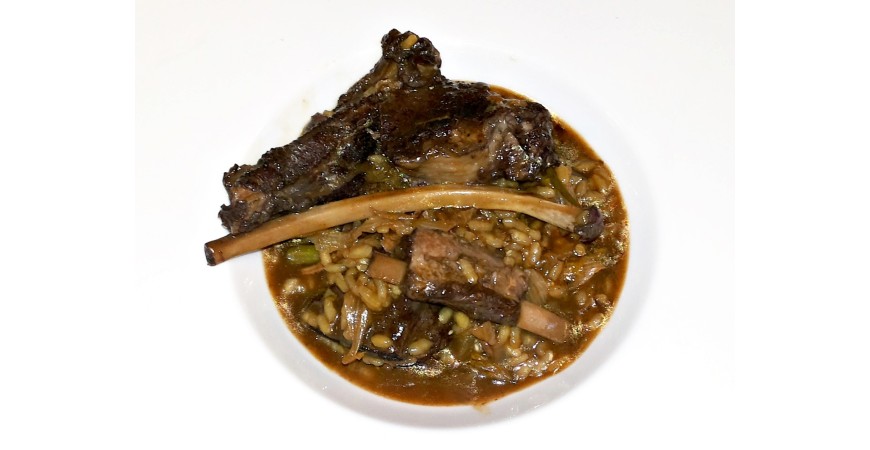Leave a Comment
Leave a Reply
Please login to post a comment.
PROFESSIONAL USE:
FOR EVENTS:
PARTICULAR USE:
Accessories:
PROFESSIONAL USE:
FOR EVENTS:



First of all, we prepare our wild boar, which we will later combine with our rice. We have the wild boar cooking over low heat for 3 hours, in this way, we will achieve tender meat.

To make the wild boar, we will prepare a classic stew. In the pot where you previously prepared the wild boar, add the turnips, parsnip, carrots, leek, celery, tomato, some Provencal herbs and red wine. To reduce the sour taste a little, you can add a little sugar.

Let it cook until halfway through making the stew, then remove the herbs and vegetables and continue until it is finished.

Once we have finished our wild boar, we have to prepare the sauce for the rice: put a frying pan on the fire and heat the oil, then we will fry the chopped onion.

After sautéing the onion, add the escarole, asparagus, and fried tomato; mix until homogenized and the tomato is reduced.
Add the rice, lightly fry it and mix it with the paprika until it absorbs the oil and the rest of the juices.
Add the result of the stir-fry to the pot where we have the stewed wild boar, making sure that it is very hot.
Let the stew come to a boil, cooking over medium heat for 7 minutes. We will move it regularly to help the rice release starch. Meanwhile, add salt and correct acidity if necessary.
Lower and regulate the heat, maintaining cooking until the desired amount of broth is left. You have to leave the rice ready, when it is not yet fully penetrated.
Remove the pot from the heat and let it rest for a few minutes with enough broth. After that, we plate.

By following these steps, we’ll have on our table a rice with wild boar, escarole, and wild asparagus that will make us feel as if we were in the very forest where the boar was hunted. Enjoy every bite, rice lovers!

He was born in 1960 in Villalpardo, a small village in La Manchuela, Cuenca. From the age of 15 to 26, he worked in hospitality every weekend and during the summer seasons, combining kitchen work with his studies.
He worked in the kitchens of all kinds of restaurants, most of them modest, enduring endless shifts for meager, almost medieval wages. Gathering bits of knowledge here and there, he gradually progressed in the art of cooking.
Years later, retired from professional kitchens, he published “The Book of Rice, Rice in My Memory” with 123 recipes.
His next culinary phase was a “study” filled with research, interpreting what medieval cuisine might have been like, published in the book “124 Recipes of Spanish Medieval Cuisine.”
The next publication was a book based on his roots, “Castilian-Manchegan Cuisine, 101 Recipes.”
The author’s most recent cookbook was a monograph dedicated to fideuà: “Fideuàs, 101 Recipes”. All of them were published by Sargantana Publishing House.
check_circle
check_circle
